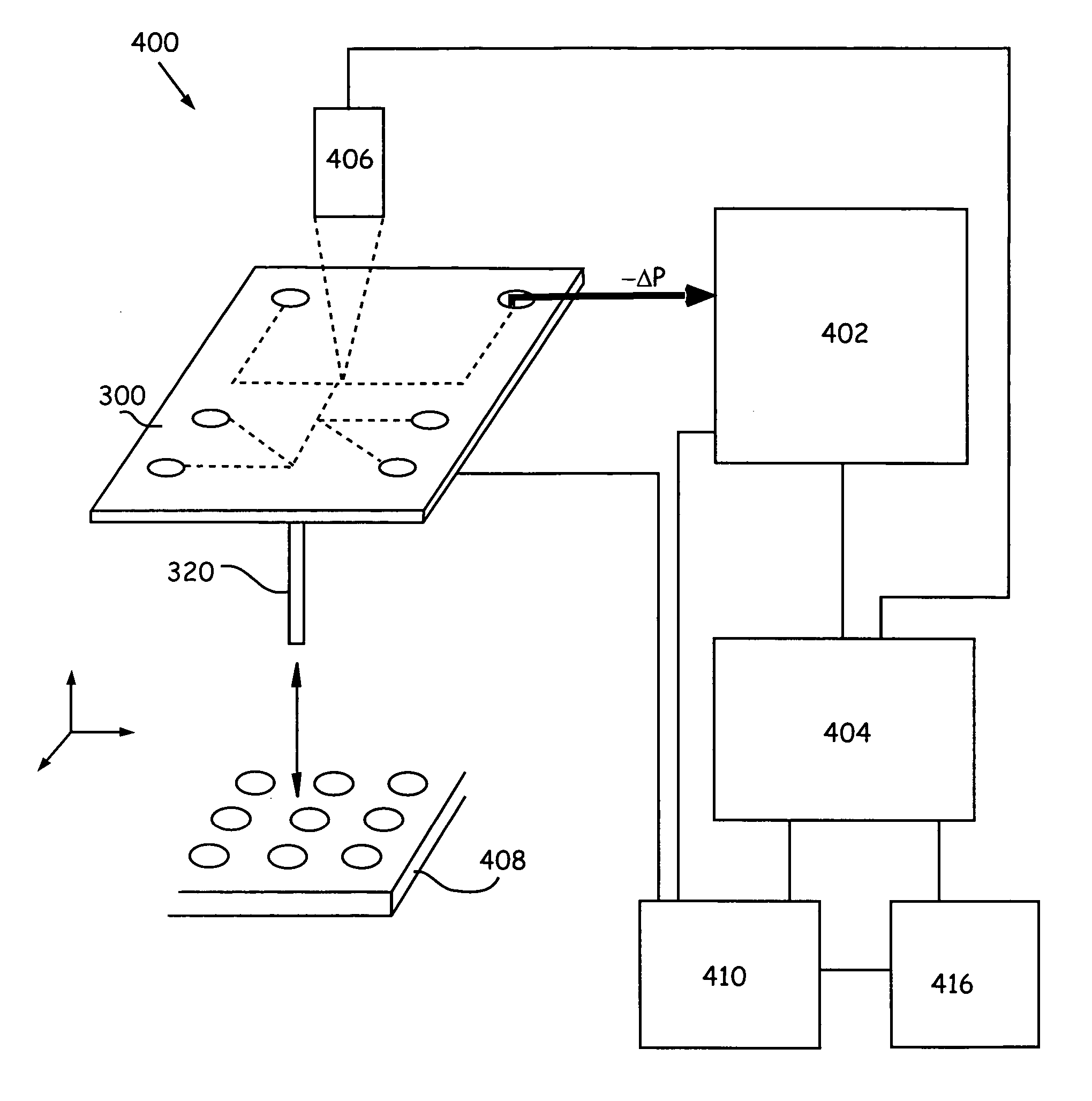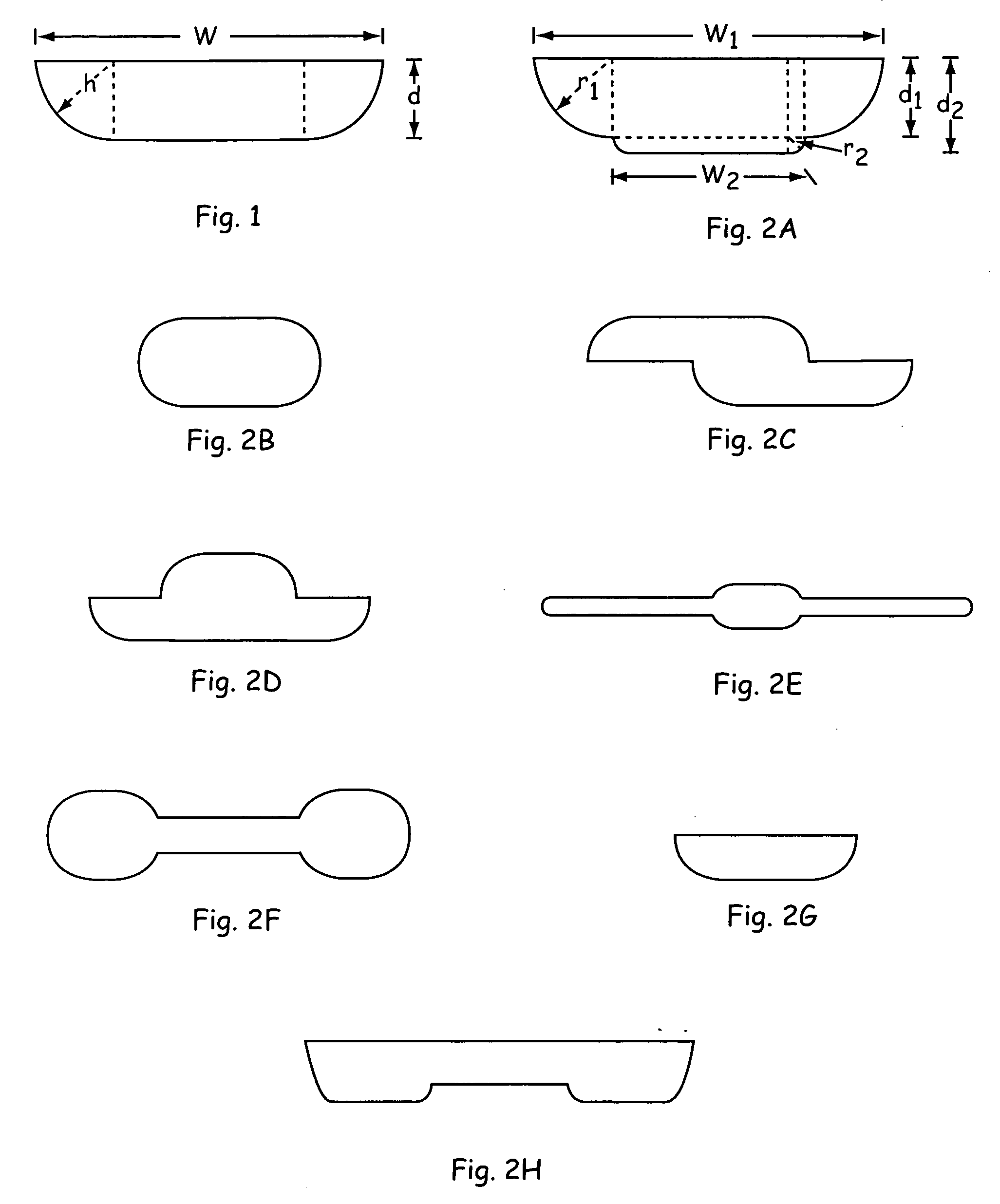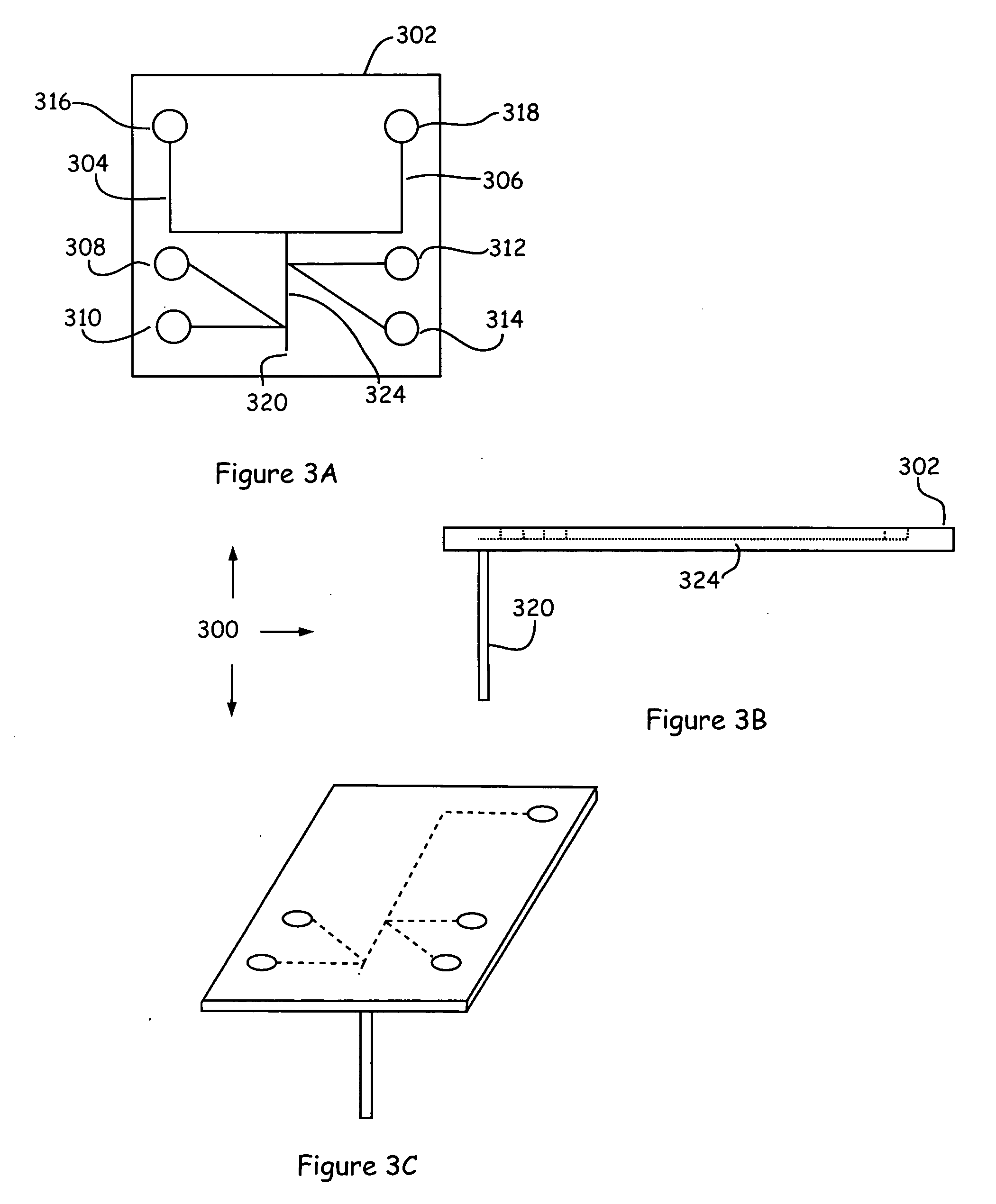Optimized high throughput analytical systems
a high throughput, analytical technology, applied in the direction of analytical using chemical indicators, laboratory glassware, instruments, etc., can solve the problems of small pressure gradient along the microchannel, severe decrease in throughput efficiency, and plugging of fluid material in the microfluidic elements, so as to reduce the dispersion rate and/or average velocity of fluidic material.
- Summary
- Abstract
- Description
- Claims
- Application Information
AI Technical Summary
Benefits of technology
Problems solved by technology
Method used
Image
Examples
example integrated
[0137] Example Integrated System
[0138]FIG. 3, Panels A, B, and C and FIG. 4 provide additional details regarding example integrated systems that optionally use the devices of the invention and optionally are used to practice the methods herein. As shown, body structure 302 has main channels 304 and 306 disposed therein. As stated previously, microchannels can comprise a number of areas comprising specifically configured cross-sectional geometry used to manipulate dispersion rates and / or average velocity (e.g., 304) additionally, numerous microchannels can comprise channels of “regular” cross-sectional geometry wherein fluidic materials are separated based on their differing dispersion rates and / or average velocity using non-electrokinetic flow (e.g., 306).
[0139] A sample or mixture of components, e.g., typically a buffer, sample, reagent, etc., is optionally flowed from pipettor channel 320 towards, e.g., reservoir 316, e.g., by applying a vacuum at reservoir 316 (or another point ...
PUM
| Property | Measurement | Unit |
|---|---|---|
| Force | aaaaa | aaaaa |
| Pressure | aaaaa | aaaaa |
| Dispersion potential | aaaaa | aaaaa |
Abstract
Description
Claims
Application Information
 Login to View More
Login to View More - R&D
- Intellectual Property
- Life Sciences
- Materials
- Tech Scout
- Unparalleled Data Quality
- Higher Quality Content
- 60% Fewer Hallucinations
Browse by: Latest US Patents, China's latest patents, Technical Efficacy Thesaurus, Application Domain, Technology Topic, Popular Technical Reports.
© 2025 PatSnap. All rights reserved.Legal|Privacy policy|Modern Slavery Act Transparency Statement|Sitemap|About US| Contact US: help@patsnap.com



